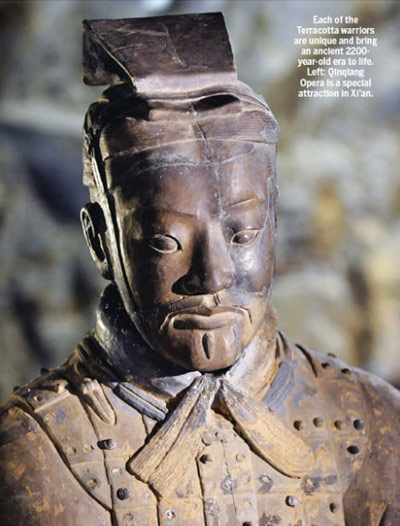
 |
|
Each of the Terracotta warriors are unique and bring an ancient 2200-year-old era to life.[Photo/China Daily] |
There is more to the ancient capital of Xi'an than just clay soldiers.
The Great Wall, the Forbidden City and Beijing's cutting-edge 2008 Olympic venues are China's hottest tourist attractions but many travelers say the ancient city of the Terracotta Warriors is one of the highlights of a Middle Kingdom adventure. Xi'an is the capital of Shaanxi province in northwestern China and sits on the middle reaches of the Yellow River, resting in one of the most important cradles of Chinese civilization.
This metropolis of 8 million people is undergoing rapid modernization with a new subway opening this year and boasting one of the largest Internet bars in the world, with 3,000 computers. However, reminders of its colorful and important past make it a city of fascination.
Xi'an was once called Chang'an (everlasting peace) and served as the first capital of a unified China in about 200 BC, at the same time the first Emperor Qin Shi Huang's sculptors began crafting thousands of clay soldiers for his monumental tomb.
Over a 1,000-year period, the city had been the capital of 13 dynasties and during the glory days of the Tang Dynasty (618-907), it grew to become the world's biggest city with 1 million people attracting travelers from across the globe. In fact, more than 12 percent of the city's residents - 120,000 people - were foreigners.
Its strategic location on the old Silk Road connected the city to the West and attracted large numbers of merchants buying, selling and exchanging ideas, in the same way Beijing and Shanghai are attracting foreign business people today.
Because of its imperial pedigree, Xi'an is called the "Capital of Delicacies" and mouth-watering cuisine is available everywhere in the city.